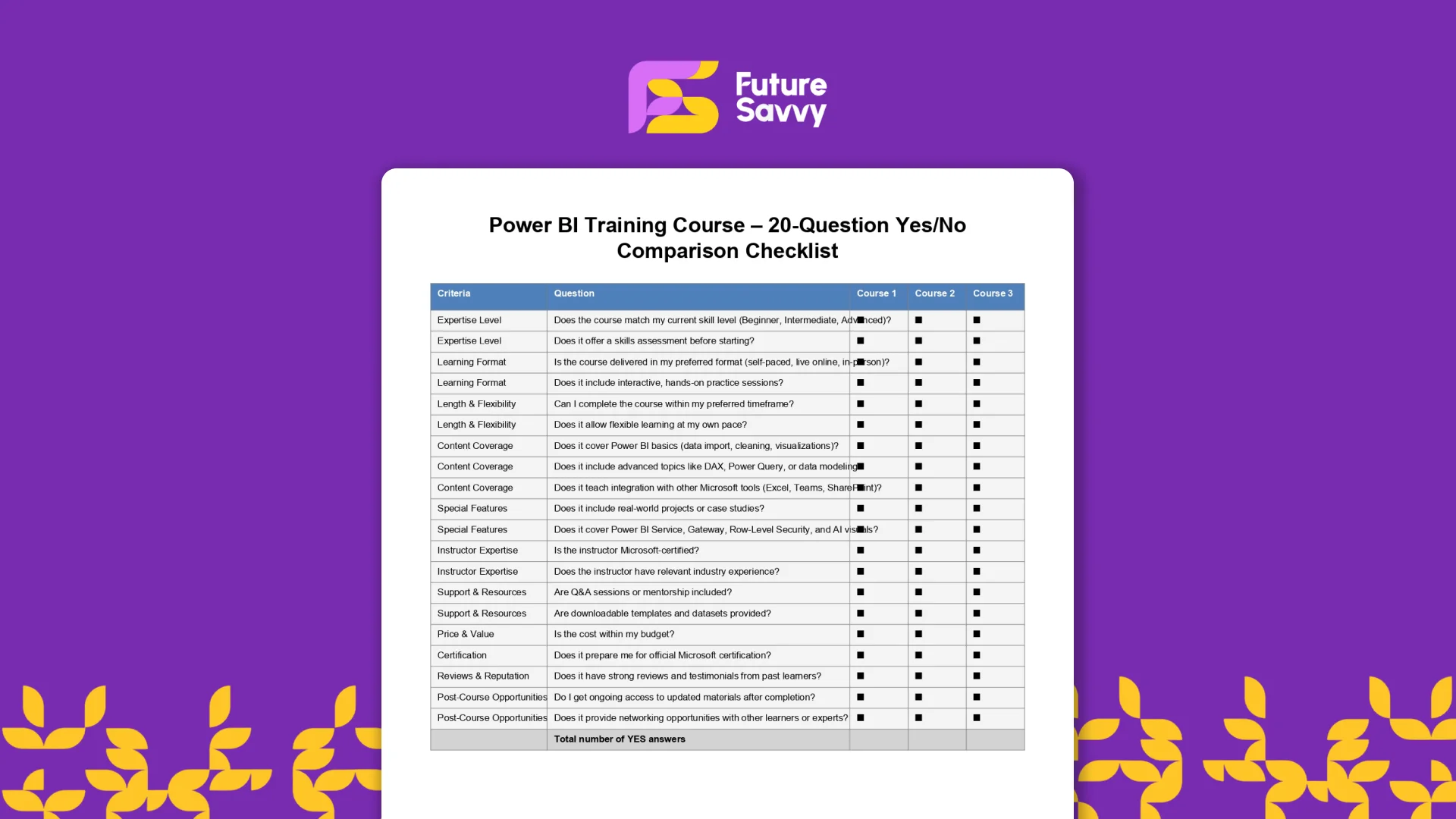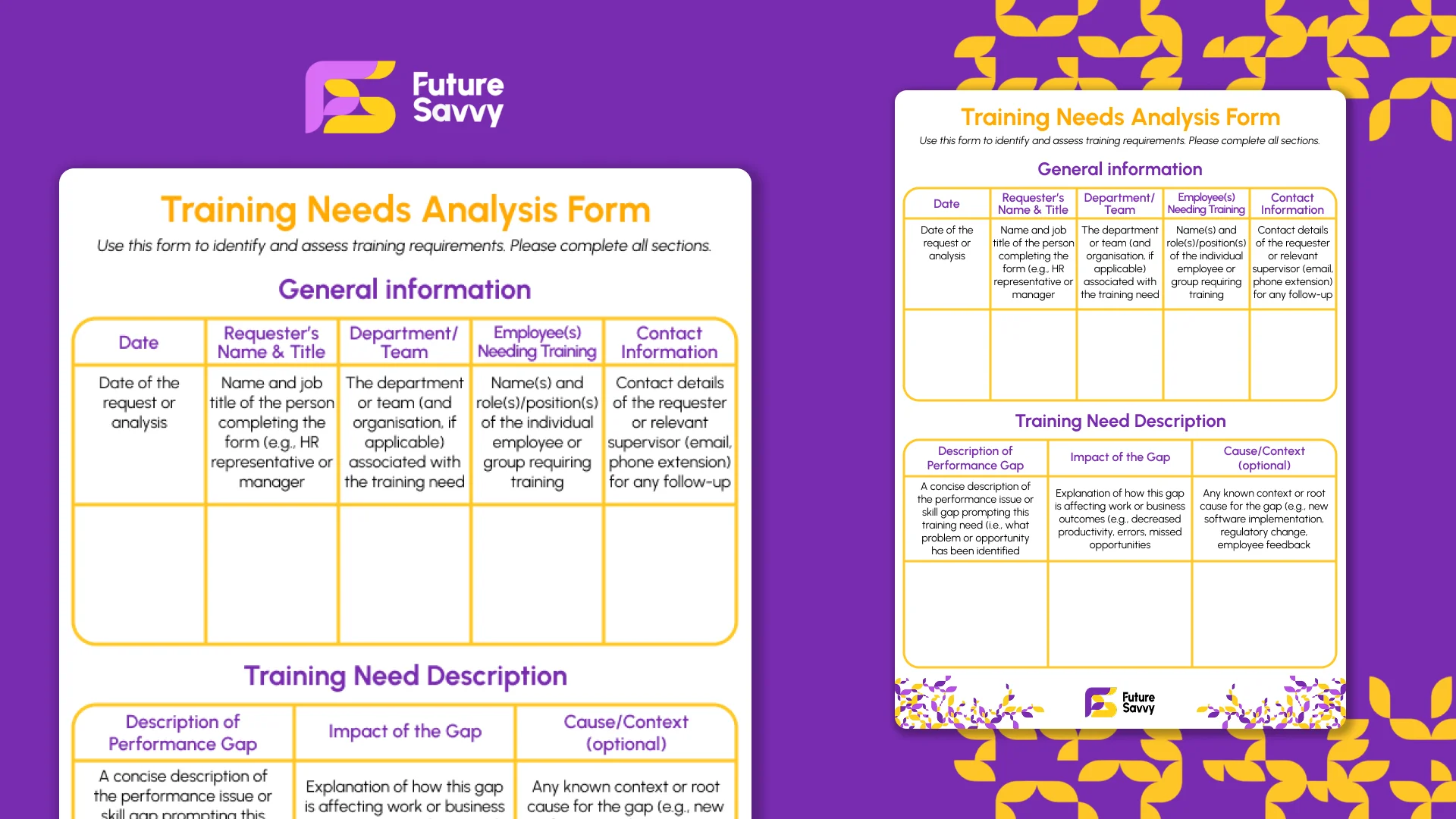L&D Insights | Future Savvy

L&D Insights
Practical wisdom for learning and development professionals
Explore expert guidance, emerging trends, and real-world advice to help you design, deliver, and champion better workplace learning. Whether you're leading an L&D strategy or just starting out, these insights are here to sharpen your thinking and support your impact.

L&D strategy for SMBs: top performers are 5× likelier to train
Top-performing UK SMBs are five times more likely to provide necessary training, and this consistent L&D strategy strongly correlates with higher productivity, profit margins, and employee engagement. By focusing on foundational digital skills (like Excel, PowerPoint, Power BI and SQL), embedding lightweight learning rituals, and equipping managers with simple coaching toolkits, SMBs can unlock significant ROI and reduce costly skills gaps.

UK skills shortage: 9 in 10 employers can’t find the skills
The article explains how the UK skills shortage, especially in data and digital capabilities, is driving higher hiring costs, lost productivity, and employee stress for SMBs. Instead of competing for scarce external talent, it argues that businesses should redefine “data skills” as practical day-to-day competencies, then close the gap through targeted upskilling - clean data habits, basic analysis, clear visuals - via apprenticeships, internal bootcamps, and mentoring.

6–12%: The Productivity Boost: The Real ROI From Reskilling & Upskilling
Reskilling and upskilling offer UK SMBs a fast, low-risk way to boost productivity by 6–12%, often delivering full ROI within a single quarter. By building skills internally rather than relying on expensive external hires, companies can close capability gaps, fully leverage existing tools, standardise best practices, and strengthen employee engagement and retention.

Why Staff Turnover in the UK Is Spiking
The article explains that UK SMBs are facing costly first-year staff turnover, largely due to underinvestment in employee skills rather than bad luck. It breaks down the true cost of churn - hiring, onboarding, and long ramp-up times- and shows how structured training, 30-60-90 day learning paths, and better onboarding can dramatically improve retention, productivity, and profitability. Using concrete maths, a hotel case study, and practical KPIs, it gives leaders a framework to calculate their own churn costs and build data-driven training programmes that keep employees longer.

Digital skills gap: £63bn a year hit for UK SMBs
UK SMBs collectively lose £63bn a year to the digital skills gap - about £3,800 per employee - driven by countless small inefficiencies. The article pinpoints three drains: process inefficiency, errors and rework, and underused software and illustrates gains via a case study where targeted enablement improved billable hours and cut rework. It recommends a pragmatic 90-day plan: audit key workflows, deliver focused training with “digital champions,” then track ROI and bake improvements into SOPs.

Power BI Training Course – 20-Question Comparison Checklist
The Power BI Training Course – 20 Questions Checklist is a practical, printable tool to compare Power BI courses across providers objectively. Use it to score curriculum quality, delivery format, hands-on practice, certification prep, and after-course support so you can choose with confidence.

Are IT Skills Training Courses Worth It?
The article argues that in a digital-first economy, investing in IT skills training courses is essential for individuals and organisations. It contrasts free learning resources with paid, proctored certifications and notes that certifications often lead to promotions, salary gains, and employer-valued productivity. For businesses, it shows strong ROI - through higher productivity and reduced risk - backed by case studies, and closes with an invitation to explore Future Savvy’s instructor-led Excel, Power BI, and SQL courses.

Training Needs Analysis Form
This fillable Training Needs Analysis (TNA) form helps teams identify and assess training requirements while capturing core request details (date, requester, team, employees). It walks you through defining the performance gap and its impact, aligning the need to business goals, comparing current vs. desired skills, and setting clear learning objectives with success criteria. You’ll also specify preferred delivery format/provider, timeline and priority, budget/resources, and define success metrics, evaluation, and approvals - so every request becomes a measurable, accountable plan.

Basic vs. Advanced SQL Training Courses: What is the difference?
The article explains what SQL training courses cover at basic and advanced levels, highlighting their shared focus on hands-on practice. It contrasts beginner courses that teach core querying and database concepts with advanced courses that tackle complex joins, window functions, CTEs, indexing, and performance. It outlines certifications, career paths, and why SQL remains a high-demand skill across roles like analysts, engineers, and developers. Finally, it offers criteria for choosing the right course and showcases instructor-led options from providers such as Future Savvy and others.


